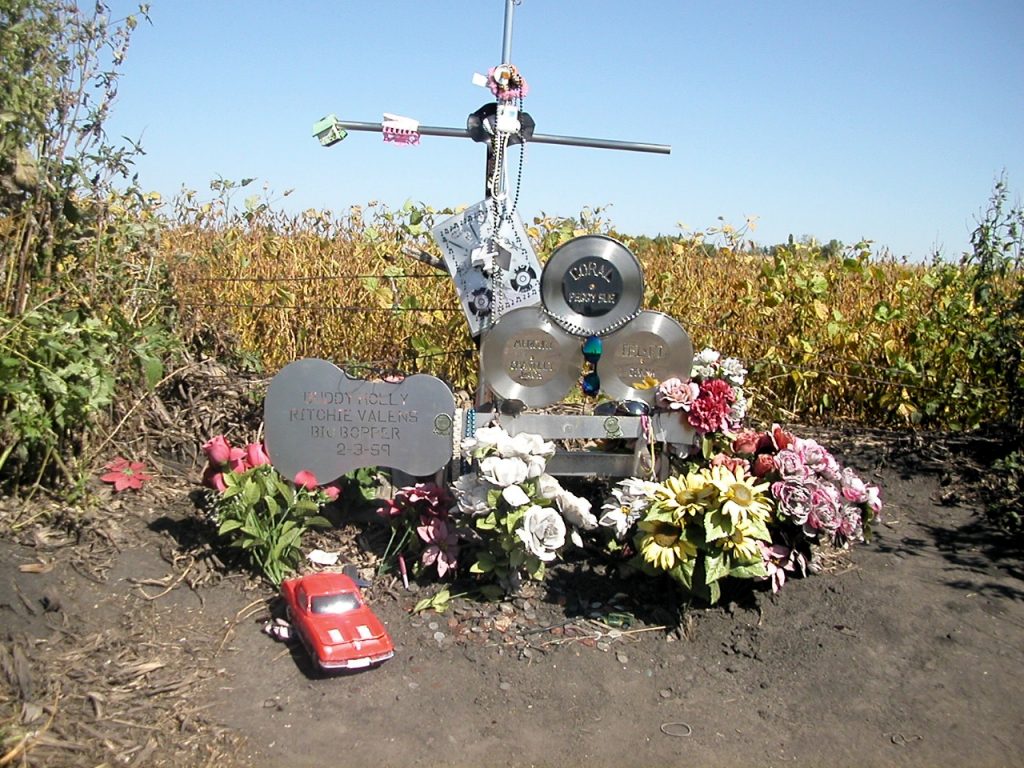Timeless 106.1 KFFB Remembers “The Day the Music Died” by Featuring, Holly, Valens and The Big Bopper”

On February 3, 1959, rock and roll musicians Buddy Holly, Ritchie Valens, and J. P. “The Big Bopper” Richardson were killed in a plane crash near Clear Lake, Iowa, together with pilot Roger Peterson. The event later became known as “The Day the Music Died”, after singer-songwriter Don McLean so referred to it in his 1971 song “American Pie”.
At the time, Holly and his band, consisting of Waylon Jennings, Tommy Allsup, and Carl Bunch, were playing on the “Winter Dance Party” tour across the Midwest. Rising artists Valens and Richardson had joined the tour as well.
That night, rock star Buddy Holly chartered an airplane from Dwyer Flying Service in Mason City, Iowa, intending to fly himself and his bandmates (Waylon Jennings and Tommy Allsup) ahead to their next tour venue in Moorhead, Minnesota, immediately after the show in Clear Lake. The musicians had been traveling by bus for over a week, and it had already broken down twice. They were tired, they had not been paid yet, and all of their clothes were dirty. The chartered flight would allow them to avoid another arduous bus ride, arrive early before the Moorhead show, do their laundry, and get some rest.
A 21-year-old local pilot, Roger Peterson of Dwyer Flying Service, had agreed to take Holly and his bandmates to their next destination. The local weather forecast for the Clear Lake area was 18 °F (−8 °C) that night with moderate gusty winds and light scattered snow, and Peterson was fatigued from a 17-hour workday, but he agreed to fly the trip.
While Frankie Sardo went to meet the crowd, Holly went into one of the dressing rooms at the Surf Ballroom where he notified Allsup and Jennings that he had chartered a plane to take them to Fargo, North Dakota (which is directly adjacent to Moorhead, Minnesota). On a friendly wager, Ritchie Valens flipped a coin with Tommy Allsup for his seat on the plane, and Valens won the coin-toss. Meanwhile, J.P. Richardson was suffering from the flu and was complaining that the bus was too cold and uncomfortable for him, so Waylon Jennings voluntarily surrendered his seat on the plane to Richardson.
Upon hearing that his bandmates had given away their plane seats and were going to take the bus rather than fly, Holly joked, “Well, I hope your ol’ bus freezes up again.” Waylon Jennings jokingly replied, “Well, I hope your ol’ plane crashes.” Those words would haunt Jennings for the rest of his life.
After the Clear Lake show ended (at around midnight), Holly, Valens and Richardson drove to the Mason City Airport, loaded their luggage and boarded the red and white single-engine Beechcraft Bonanza. At around 1:00 am on February 3, 1959, pilot Roger Peterson received clearance from the control tower, taxied down the runway and took off; however, the plane remained airborne for only a few minutes. For some unknown reason, shortly after take-off, the plane slammed into the ground at full-throttle about 5 miles outside Mason City in the middle of farm country. Possibly, Peterson lost his visual reference and thought he was ascending while he was actually descending; and it’s possible that he had mechanical problems and was attempting to turn back toward Mason City. For whatever reason, the right wingtip of the Beechcraft Bonanza first sliced into the frozen ground and sent the aircraft cartwheeling across a cleared cornfield at approximately 170 mph.
The bodies of Buddy Holly, Ritchie Valens, and J.P. Richardson were ejected from the plane on impact and probably tumbled along with the wreckage across the icy field, before the mangled plane came to rest against a barbwire fence. While pilot Roger Peterson’s body remained entangled in the main mass of plane wreckage, the fully clothed bodies of Buddy Holly and Ritchie Valens came to rest several feet away from the wreckage on open ground.
Wearing only a red-checked flannel shirt and light blue cotton pants, the body of J.P. Richardson was thrown approximately 100 feet beyond the wreckage, across the fenceline and into the next cornfield. Like Holly and Valens, Richardson died instantly of massive head and chest injuries.
The crash site was not discovered until well after sunrise, when the owner of Dwyer Flying Service conducted a brief search, following Peterson’s flight path.[6] Because of the weather and remote location of the wreck, no ground team was able reach the crash site until later in the morning.






